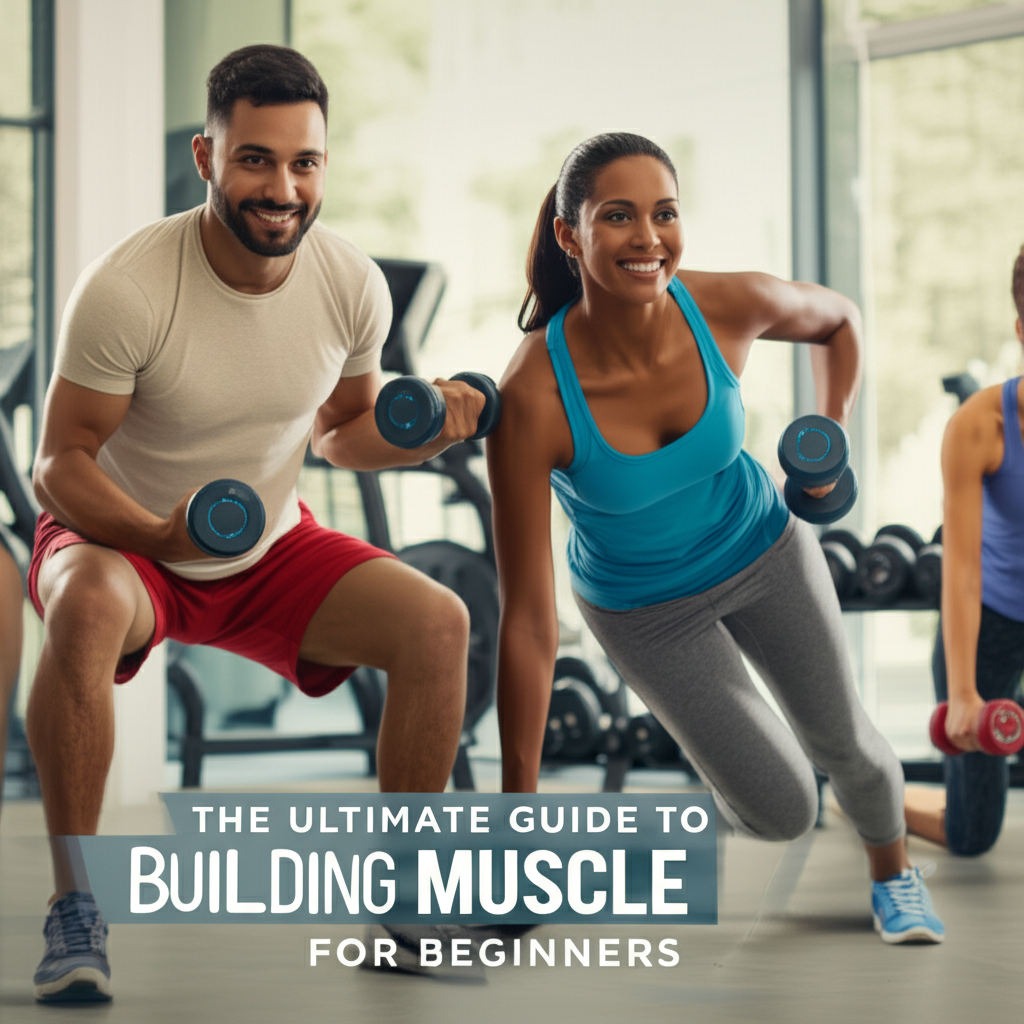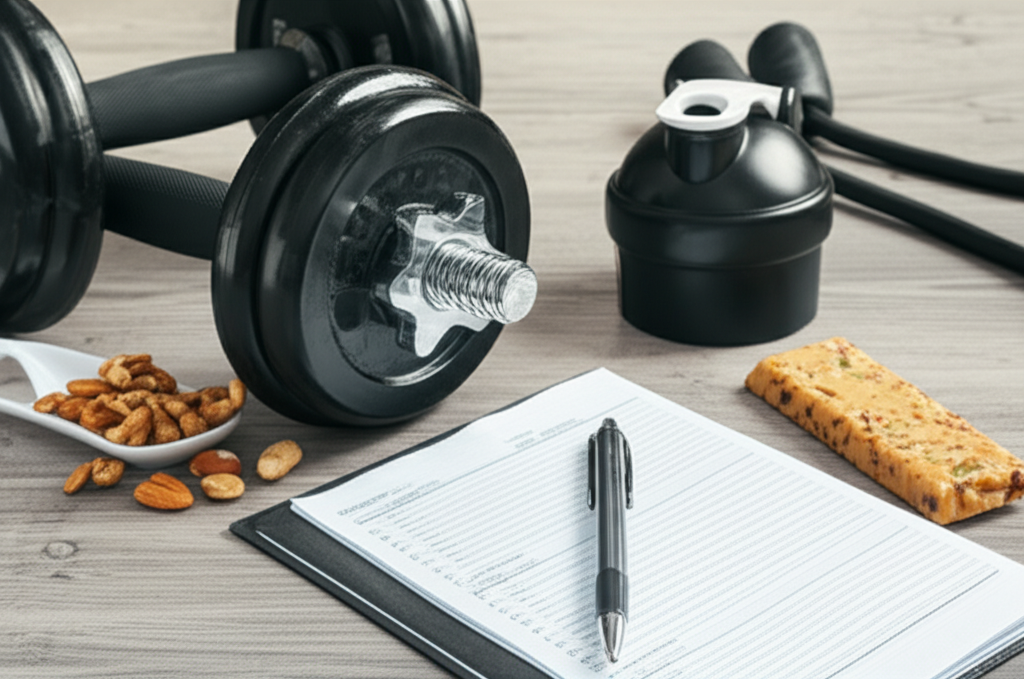The Ultimate Guide to Building Muscle for Beginners

The Ultimate Guide to Building Muscle for Beginners

Building muscle for beginners is achievable with a smart approach to training, nutrition, and recovery. This guide provides a step-by-step plan to help you gain muscle safely and effectively, focusing on fundamental principles for sustainable results.
Key Takeaways
- Start with compound exercises for maximum muscle engagement.
- Prioritize progressive overload to continually challenge muscles.
- Consume adequate protein to fuel muscle repair and growth.
- Ensure sufficient rest for muscle recovery and adaptation.
- Stay consistent with your training and nutrition plan.
Introduction
Are you looking to build muscle but feel overwhelmed by all the information out there? You’re not alone! Many beginners want to sculpt a stronger, more defined physique, but the path can seem complicated. The good news is that building muscle doesn’t require advanced techniques or extreme measures. It boils down to understanding a few fundamental principles and applying them consistently. This guide is designed to cut through the noise and provide you with a clear, actionable roadmap to building muscle for beginners. We’ll break down everything you need to know, from the best exercises to the right foods and the importance of rest. Get ready to transform your body with this ultimate guide.
Understanding Muscle Growth: The Basics
Before we dive into the “how-to,” let’s quickly touch on what “building muscle” actually means. This process is scientifically known as muscle hypertrophy. It happens when your muscle fibers experience stress, typically from resistance training. This stress causes microscopic tears. Your body then repairs these tears, making the muscle fibers thicker and stronger to better handle future stress. It’s a continuous cycle of stress, repair, and adaptation.
This adaptation process requires three key elements working together: effective training, proper nutrition, and adequate recovery. Neglecting any one of these will significantly hinder your progress. Think of it like building a house: you need a solid foundation (training), the right building materials (nutrition), and time for everything to set and strengthen (recovery).
Step 1: Designing Your Beginner Muscle-Building Workout
Your training program is the engine that drives muscle growth. For beginners, it’s crucial to focus on simplicity, effectiveness, and safety. This means prioritizing compound exercises, which work multiple muscle groups simultaneously, and ensuring you learn proper form to prevent injuries.
Focus on Compound Lifts
Compound exercises are the cornerstone of any effective muscle-building program, especially for beginners. They allow you to lift more weight, stimulate more muscle fibers, and are more time-efficient than isolation exercises (which target a single muscle group).
Here are the fundamental compound lifts:
- Squats: Works your quadriceps, hamstrings, glutes, and core.
- Deadlifts: Engages your entire posterior chain (hamstrings, glutes, back) as well as your forearms and core.
- Bench Press: Primarily targets your chest, shoulders, and triceps.
- Overhead Press: Works your shoulders, triceps, and upper chest.
- Rows (e.g., Barbell Row, Dumbbell Row): Develops your back muscles (lats, rhomboids) and biceps.
- Pull-ups/Chin-ups: Excellent for building your back and biceps. (Assisted versions are great for beginners).
Structuring Your Workout Routine
As a beginner, a full-body workout routine performed 2-3 times per week is often the most effective starting point. This allows each muscle group to be trained frequently, promoting faster initial gains and helping you learn the movements. Ensure you have at least one rest day between workouts for recovery.
Here’s a sample beginner full-body workout routine:
Sample Beginner Full-Body Workout (3 Days/Week)
| Exercise | Sets | Reps | Rest Between Sets | Focus Areas |
|---|---|---|---|---|
| Barbell Squats | 3 | 8-12 | 60-90 seconds | Quads, Hamstrings, Glutes, Core |
| Bench Press (Barbell or Dumbbell) | 3 | 8-12 | 60-90 seconds | Chest, Shoulders, Triceps |
| Barbell Rows | 3 | 8-12 | 60-90 seconds | Back, Biceps |
| Overhead Press (Barbell or Dumbbell) | 3 | 8-12 | 60-90 seconds | Shoulders, Triceps |
| Romanian Deadlifts (or lighter conventional deadlifts) | 3 | 10-15 | 60-90 seconds | Hamstrings, Glutes, Lower Back |
| Plank | 3 (hold for time) | 30-60 seconds | 60 seconds | Core |
| Optional: Lat Pulldowns (if pull-ups are too difficult) | 3 | 10-15 | 60 seconds | Back, Biceps |
Note: Remember to warm up for 5-10 minutes before each workout with light cardio and dynamic stretching. Cool down with static stretching afterwards.
The Principle of Progressive Overload
Muscle growth doesn’t happen if you do the same thing week after week. Your muscles need to be challenged progressively. This is known as progressive overload. As you get stronger, you need to gradually increase the demand placed on your muscles. Here’s how you can implement it:
- Increase the weight: Once you can comfortably complete the higher end of your rep range (e.g., 12 reps) for all sets with good form, increase the weight slightly for your next workout.
- Increase the reps: If you can’t increase the weight, try to perform one or two more repetitions with the
